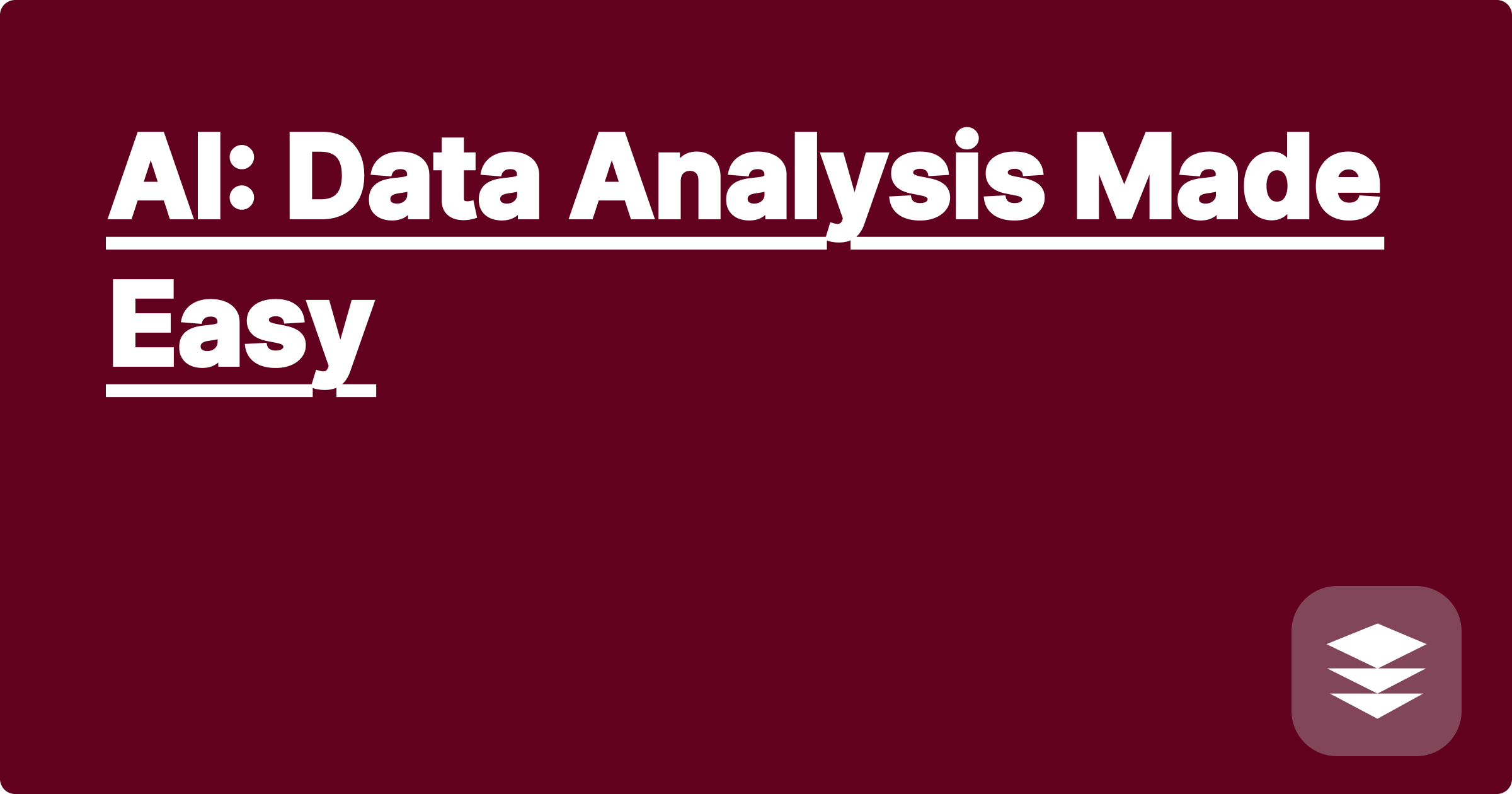
STEM fields are awash in data. From complex simulations in astrophysics to high-throughput experiments in biology, researchers are constantly grappling with massive datasets. Analyzing this data efficiently and extracting meaningful insights can be a significant bottleneck, hindering scientific discovery and technological advancement. Artificial intelligence (AI) offers a powerful suite of tools to address this challenge, providing researchers with the means to automate analysis, uncover hidden patterns, and accelerate the pace of innovation.
This is particularly relevant for STEM students and researchers who are often tasked with analyzing large, complex datasets as part of their coursework or research projects. Mastering AI-powered data analysis techniques can significantly enhance their productivity, enabling them to focus on higher-level thinking and interpretation rather than tedious manual processing. These skills are increasingly sought after in both academia and industry, making AI proficiency a valuable asset for career advancement.
Data analysis in STEM often involves a series of complex steps. Researchers typically begin by collecting data from various sources, which might include experiments, simulations, or sensor readings. This raw data is often messy, containing errors, inconsistencies, and missing values. Therefore, a crucial initial step is data cleaning and preprocessing, which involves handling missing data, removing outliers, and transforming the data into a suitable format for analysis. Following this, researchers employ various statistical methods and algorithms to identify trends, correlations, and patterns within the data. This can involve techniques like regression analysis, clustering, and classification. Finally, the results of the analysis must be interpreted and visualized to draw meaningful conclusions and communicate findings effectively. These steps can be time-consuming and require specialized expertise, posing a significant challenge for many STEM researchers.
AI tools like ChatGPT, Claude, and Wolfram Alpha offer a streamlined approach to data analysis. ChatGPT and Claude, for example, can be used to automate tasks such as data cleaning and preprocessing by generating code in languages like Python or R. These tools can also assist with exploratory data analysis by providing summaries, generating descriptive statistics, and identifying potential outliers. Wolfram Alpha, with its powerful computational engine, can perform complex calculations, symbolic manipulations, and statistical analyses, enabling researchers to quickly explore different hypotheses and models. Furthermore, these AI tools can be integrated with existing data analysis workflows, augmenting traditional methods and enhancing overall efficiency.
Begin by clearly defining your research question and identifying the relevant data. This involves specifying the variables of interest and the type of analysis required. Next, prepare your data for analysis by cleaning and preprocessing it. This might involve using AI tools like ChatGPT to generate code for handling missing values or removing outliers. Once the data is prepared, explore different AI-powered analysis techniques. For instance, you could use ChatGPT or Claude to generate code for performing regression analysis or clustering. Wolfram Alpha can be particularly useful for exploring complex mathematical relationships and generating visualizations. After performing the analysis, carefully interpret the results and draw conclusions based on the evidence. Finally, communicate your findings effectively using clear visualizations and concise explanations.
Consider a researcher studying the relationship between temperature and plant growth. They have collected data on temperature and plant height over several months. Using ChatGPT, they can generate Python code to perform a linear regression analysis, modeling the relationship between these two variables. The generated code might use libraries like scikit-learn to fit a linear regression model to the data and calculate the R-squared value, indicating the goodness of fit. Alternatively, the researcher could use Wolfram Alpha to directly input the data and perform the regression analysis, obtaining the equation of the line of best fit and other relevant statistics. For example, entering "linear fit {temperature data},{plant height data}" into Wolfram Alpha would yield the regression equation and related statistics. Another example involves a biologist analyzing gene expression data. They could use Claude to generate code for performing clustering analysis, grouping genes with similar expression patterns. This could help identify genes involved in the same biological pathways.
Leverage AI tools strategically throughout your research process. Start by exploring the capabilities of different AI platforms and identifying those that best suit your specific needs. Practice using these tools with sample datasets to gain familiarity and proficiency. When using AI-generated code, always review and understand the underlying logic to ensure its accuracy and appropriateness for your research question. Document your AI-assisted analysis clearly, including the specific tools used and the parameters employed. This ensures reproducibility and transparency in your research. Finally, remember that AI tools are meant to augment, not replace, human expertise. Critical thinking and domain knowledge remain essential for interpreting results and drawing meaningful conclusions.
To effectively integrate AI into your STEM workflow, begin by exploring the free resources and tutorials available online for tools like ChatGPT, Claude, and Wolfram Alpha. Experiment with these tools on small projects to gain hands-on experience. Consider taking online courses or workshops that focus on AI-powered data analysis techniques. Engage with online communities and forums to learn from other researchers and share best practices. By actively pursuing these opportunities, you can equip yourself with the skills and knowledge necessary to thrive in the data-driven world of STEM.